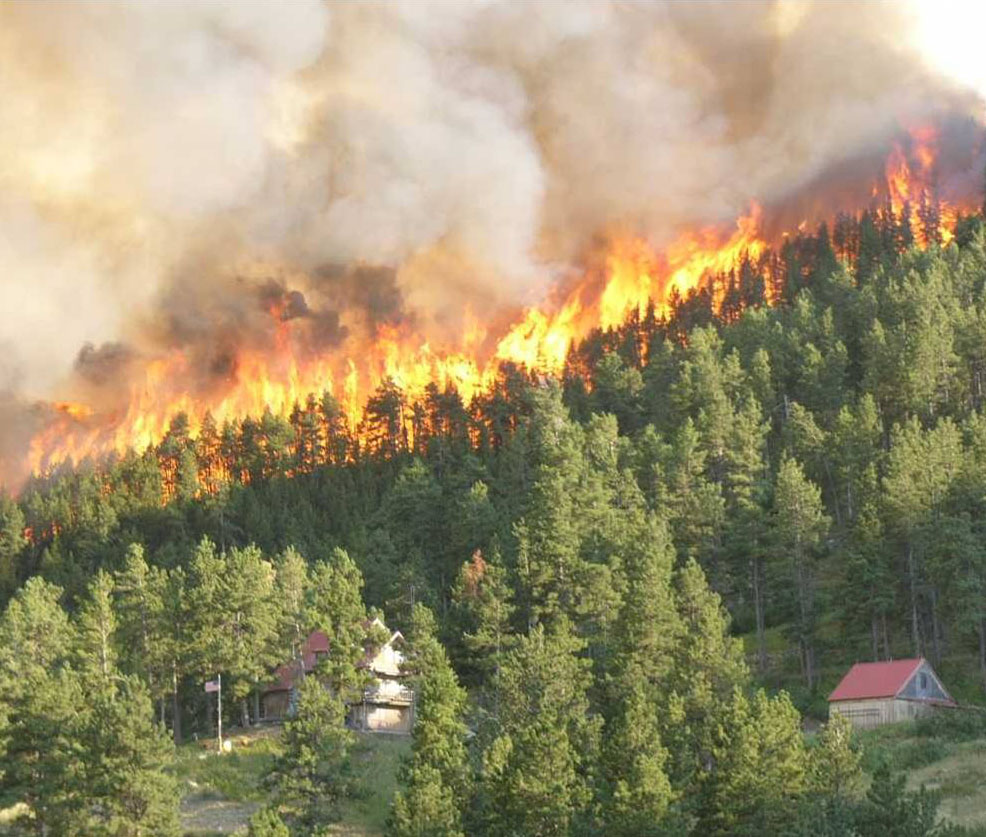The next global warming conference should not be held in Copenhagen, but in Arizona.
I don’t know if anyone else remembers the Grand Canyon Visibility Transport Commission, but I still recall the brain damage inflicted by 5 years of advisory committee meetings in the early 1990’s. The group, reporting to the EPA, analyzed and conducted major studies to find out why the air across the American Southwest was so hazy. It was created because of the dire concern that power plants, cars and other pollution sources were fouling the air in some of America’s most scenic postcards, including the Grand Canyon.
 One early study found astounding evidence that the largest episodic contributor to regional haze was neither cars nor power plants, but smoke from fires on federal lands – many of the fires set on purpose by land managers to clear overgrown brush and trees (“prescribed fires”). When the Commission made its final recommendations to the EPA in 1996, it simply did not know what to do with that information, because the fires were considered important by federal officials and environmental groups, who had promoted the study because they thought it would help stop the growing use of fossil fuels. The studies did not support the desired conclusions, so the Commission nevertheless recommended the predictable regulations and, with respect to federal land fires, simply said ways should be found to make fires smoke less, and the public should be educated about how important such fires are. In other words, we should limit fossil fuel use precisely BECAUSE we should NOT limit the wildfires that actually cause much of the problem.
One early study found astounding evidence that the largest episodic contributor to regional haze was neither cars nor power plants, but smoke from fires on federal lands – many of the fires set on purpose by land managers to clear overgrown brush and trees (“prescribed fires”). When the Commission made its final recommendations to the EPA in 1996, it simply did not know what to do with that information, because the fires were considered important by federal officials and environmental groups, who had promoted the study because they thought it would help stop the growing use of fossil fuels. The studies did not support the desired conclusions, so the Commission nevertheless recommended the predictable regulations and, with respect to federal land fires, simply said ways should be found to make fires smoke less, and the public should be educated about how important such fires are. In other words, we should limit fossil fuel use precisely BECAUSE we should NOT limit the wildfires that actually cause much of the problem.
During the 14 years since that report was issued, federal lands have contributed more smoke and haze than could have been imagined at the time. In Colorado alone, forest fires in 2002 produced more particulate pollution that all of man’s activities in the West since the beginning of time. The recent California fires are even worse for clean air and visibility. And the failure to manage our national forests to prevent such catastrophic fires has gone from alarming to appalling. The death and destruction of our priceless and irreplaceable national forests should bring shame to the activists who worked so hard to eliminate all timber management. On the contrary, today’s OMB wants to cut the timber management program in half. The result is overgrown forests, choking for water and unable to fight bark beetles and other pests, leaving billions of trees dying, falling down, and burning in massive unnatural fires that destroy entire landscapes, foul vital watersheds, and pollute the air. Even worse, from a global warming perspective, fires belch out the very greenhouse gas (carbon dioxide) that live healthy trees absorb.
I was reminded in December of the Grand Canyon studies because of the bizarre difference in the way our government approached the forest crisis in Colorado, and the global warming “crisis” in Copenhagen. Warned that the Forest Service no longer has the resources to thin forests in the Rocky Mountains to a more natural condition and help restore forest health, federal officials debated the matter for two years, and in December finally decided they could afford another $40 million, enough to scratch the surface in one small part of these forests (the part where people built trophy homes). But when warned that the United States might be blamed for not doing enough to stop the destruction of South American rain forests, the Administration committed $2.5 Billion to that effort without batting an eye.
Apparently South American forests are considered vitally important in the effort to capture carbon dioxide and prevent further global warming – but forests in the United States are far less important to that effort. If you were cynical, you might suspect the real agenda is less about either global warming or forest health, and more about redistributing wealth.




I would like permission to use the photo in this article in WSU Extension educational materials about forest-urban interface work we are doing in Washington State. Please contact me via the email address that I include below. Thanks!
On target once again. I often drive through the rust colored forests of Colorado and wonder when an epic disaster will occur.
Comments on this entry are closed.